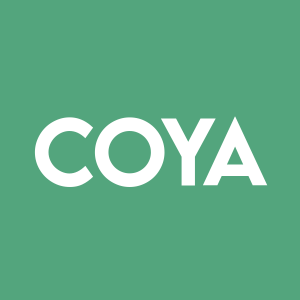Coya Therapeutics Announces Successful Pre-IND and Type C Meetings with the FDA to Advance the Development of COYA 302 for Treatment of Amyotrophic Lateral Sclerosis (ALS)
- Coya has a clear path towards submission of the IND application to the FDA in the second quarter of 2024, with a planned initiation of a well-controlled, double-blind clinical trial of COYA 302 in patients with ALS upon acceptance of the IND
COYA 302 is a dual-mechanism investigational biologic combination therapy comprised of proprietary low dose IL-2 and fusion protein CTLA-4 Ig. Low dose IL-2 enhances anti-inflammatory Treg function and numbers while the fusion protein CTLA-4 Ig is intended to suppress pro-inflammatory cell function enabling potentially synergistic mechanisms in modulating inflammatory pathways.
As a result of the interactions with the FDA, Coya has obtained constructive feedback and has reached alignment on key areas involved in the development of COYA 302, including CMC (chemistry, manufacturing, and controls), preclinical and clinical activities for the IND application. The results of the regulatory meetings constitute a significant step towards the submission of the IND application to the FDA in the second quarter of 2024, and initiation of a well-controlled, double-blind clinical trial of COYA 302 in patients with ALS upon acceptance of the IND. Coya plans to continue working closely with the FDA over the course of the COYA 302 development program.
Dr. Fred Grossman, President and Chief Medical Officer of Coya stated, “This important feedback allows us to advance our development program in ALS with a planned double-blind controlled study, with the potential for bringing forward a much-needed therapy for ALS patients.”
Howard H. Berman, Ph.D., CEO of Coya stated: “We believe that gaining alignment with FDA through multiple regulatory meetings on the path to filing an IND in Q2, 2024 is an important next step in advancing the program in patients with ALS. With the recent out-licensing transaction and private placement transaction securing Coya a cash runway into 2026 and through completion of this study, we believe that we are in a position to execute and deliver value to patients and shareholders.”
About COYA 302
COYA 302 is an investigational and proprietary biologic combination therapy with a dual immunomodulatory mechanism of action intended to enhance the anti-inflammatory function of regulatory T cells (Tregs) and suppress the inflammation produced by activated monocytes and macrophages. COYA 302 is comprised of proprietary low dose interleukin-2 (LD IL-2) and CTLA-4 Ig and is being developed for subcutaneous administration for the treatment of patients with ALS. These mechanisms may have additive or synergistic effects.
In February of 2023 Coya announced results from a proof-of-concept, open-label clinical study evaluating LD IL-2 and CTLA-4 Ig in small cohort of patients with ALS, conducted at the Houston Methodist Research Institute (
During the 48-week treatment period, the therapy was well tolerated. The most common adverse event was mild injection-site reactions. No patient discontinued the study, and no deaths or other serious adverse events were reported.
Patients' disease progression was measured using the ALSFRS-R scale, a validated rating tool for monitoring the progression of disability in patients with ALS. The mean (±SD) ALSFRS-R scores at week 24 (33.75 ±3.3) and week 48 (32 ±7.8) after initiation of treatment were not statistically different compared to the ALSFRS-R score at baseline (33.5 ±5.9), suggesting significant amelioration in the progression of the disease over the 48-week treatment period.
Treg suppressive function, expressed as percentage of inhibition of proinflammatory T cell proliferation, showed a statistically significant increase over the course of the treatment period and was significantly reduced at the end of the 8-week washout post-treatment period. Treg suppressive function at 24 weeks (79.9±9.6) and 48 weeks (89.5±4.1) were significantly higher compared to baseline (62.1±8.1) (p<0.01), suggesting enhanced and durable Treg suppressive function over the course of treatment. In contrast, Treg suppressive function (mean ±SD) was significantly decreased at the end of the 8-week washout period compared to end-of-treatment at week 48 (70.3±8.1 vs. 89.5±4.1, p <0.05).
The study also evaluated serum biomarkers of inflammation, oxidative stress, and lipid peroxides. The available data up to 16 weeks after initiation of treatment suggest a decrease of these biomarker levels, which is consistent with the observed enhancement of Treg function. The evaluation of the full biomarker data is ongoing.
COYA 302 is an investigational product not yet approved by the FDA or any other regulatory agency.
About Amyotrophic Lateral Sclerosis
Amyotrophic lateral sclerosis (ALS), also known as Lou Gehrig's Disease, is a rare neurological disease that affects motor neurons, the nerve cells in the brain and spinal cord that control voluntary muscle movement. About 20,000 people live with ALS in
- Atassi N, et al. The PRO-ACT database: design, initial analyses, and predictive features. Neurology, 2014;83:1719–1725. doi: 10.1212/WNL.0000000000000951.
- National Institutes of Health (NIH) Website (https://www.ninds.nih.gov/health-information/disorders/amyotrophic-lateral-sclerosis-als), accessed on January 4, 2023.
About Coya Therapeutics, Inc.
Headquartered in
Forward-Looking Statements
This press release contains “forward-looking” statements that are based on our management’s beliefs and assumptions and on information currently available to management. Forward-looking statements include all statements other than statements of historical fact contained in this presentation, including information concerning our current and future financial performance, business plans and objectives, current and future clinical and preclinical development activities, timing and success of our ongoing and planned clinical trials and related data, the timing of announcements, updates and results of our clinical trials and related data, our ability to obtain and maintain regulatory approval, the potential therapeutic benefits and economic value of our product candidates, competitive position, industry environment and potential market opportunities. The words “believe,” “may,” “will,” “estimate,” “continue,” “anticipate,” “intend,” “expect,” and similar expressions are intended to identify forward-looking statements.
Forward-looking statements are subject to known and unknown risks, uncertainties, assumptions and other factors including, but not limited to, those related to risks associated with the impact of COVID-19; the success, cost and timing of our product candidate development activities and ongoing and planned clinical trials; our plans to develop and commercialize targeted therapeutics; the progress of patient enrollment and dosing in our preclinical or clinical trials; the ability of our product candidates to achieve applicable endpoints in the clinical trials; the safety profile of our product candidates; the potential for data from our clinical trials to support a marketing application, as well as the timing of these events; our ability to obtain funding for our operations; development and commercialization of our product candidates; the timing of and our ability to obtain and maintain regulatory approvals; the rate and degree of market acceptance and clinical utility of our product candidates; the size and growth potential of the markets for our product candidates, and our ability to serve those markets; our commercialization, marketing and manufacturing capabilities and strategy; future agreements with third parties in connection with the commercialization of our product candidates; our expectations regarding our ability to obtain and maintain intellectual property protection; our dependence on third party manufacturers; the success of competing therapies or products that are or may become available; our ability to attract and retain key scientific or management personnel; our ability to identify additional product candidates with significant commercial potential consistent with our commercial objectives; ; and our estimates regarding expenses, future revenue, capital requirements and needs for additional financing.
We have based these forward-looking statements largely on our current expectations and projections about future events and trends that we believe may affect our financial condition, results of operations, business strategy, short-term and long-term business operations and objectives, and financial needs. Moreover, we operate in a very competitive and rapidly changing environment, and new risks may emerge from time to time. It is not possible for our management to predict all risks, nor can we assess the impact of all factors on our business or the extent to which any factor, or combination of factors, may cause actual results to differ materially from those contained in any forward-looking statements we may make. In light of these risks, uncertainties and assumptions, the forward-looking events and circumstances discussed herein may not occur and actual results could differ materially and adversely from those anticipated or implied in the forward-looking statements. Although our management believes that the expectations reflected in our forward-looking statements are reasonable, we cannot guarantee that the future results, levels of activity, performance or events and circumstances described in the forward-looking statements will be achieved or occur. We undertake no obligation to publicly update any forward-looking statements, whether written or oral, that may be made from time to time, whether as a result of new information, future developments or otherwise.
View source version on businesswire.com: https://www.businesswire.com/news/home/20240105424614/en/
Investor Contact
David
david@coyatherapeutics.com
Hayden IR
James Carbonara
James@haydenir.com
646-755-7412
Media Contact
Jessica Starman
media@coyatherapeutics.com
Source: Coya Therapeutics, Inc.







